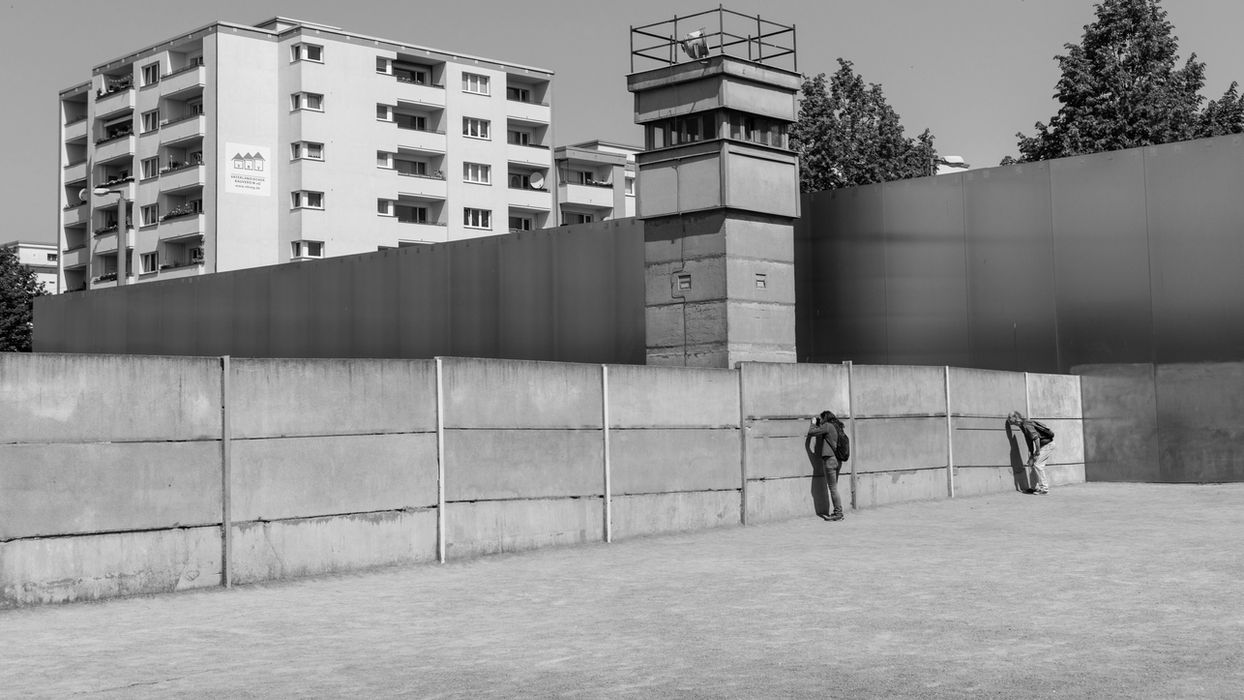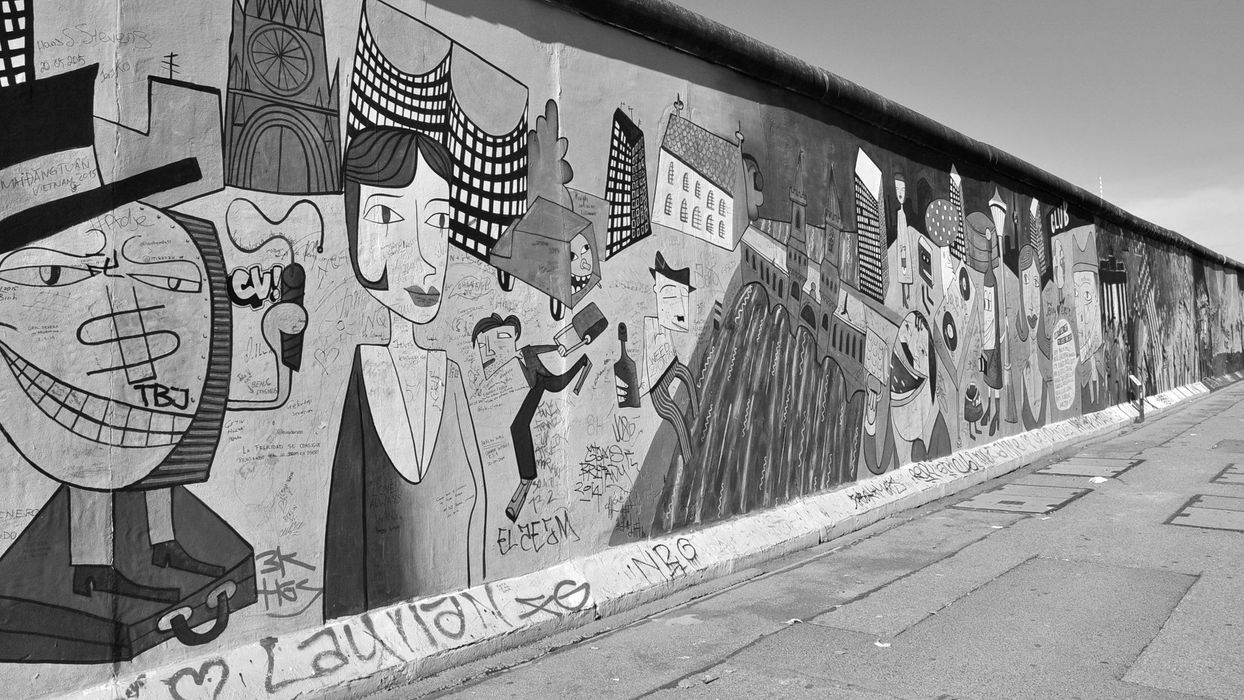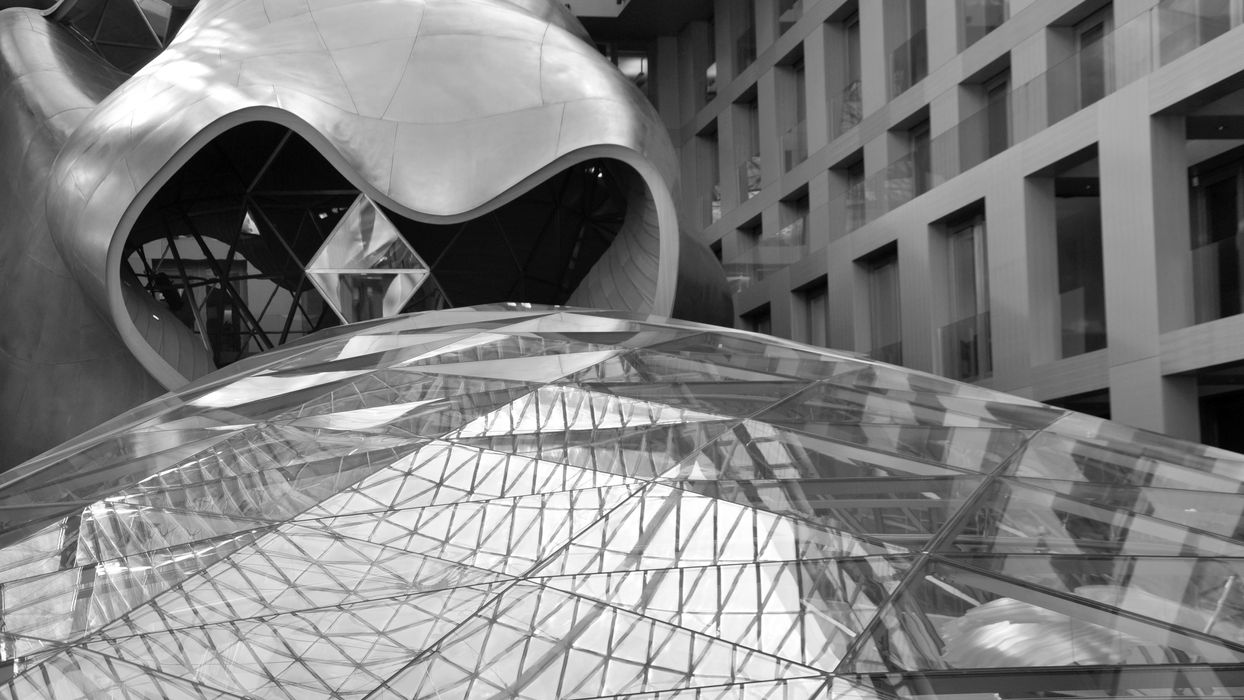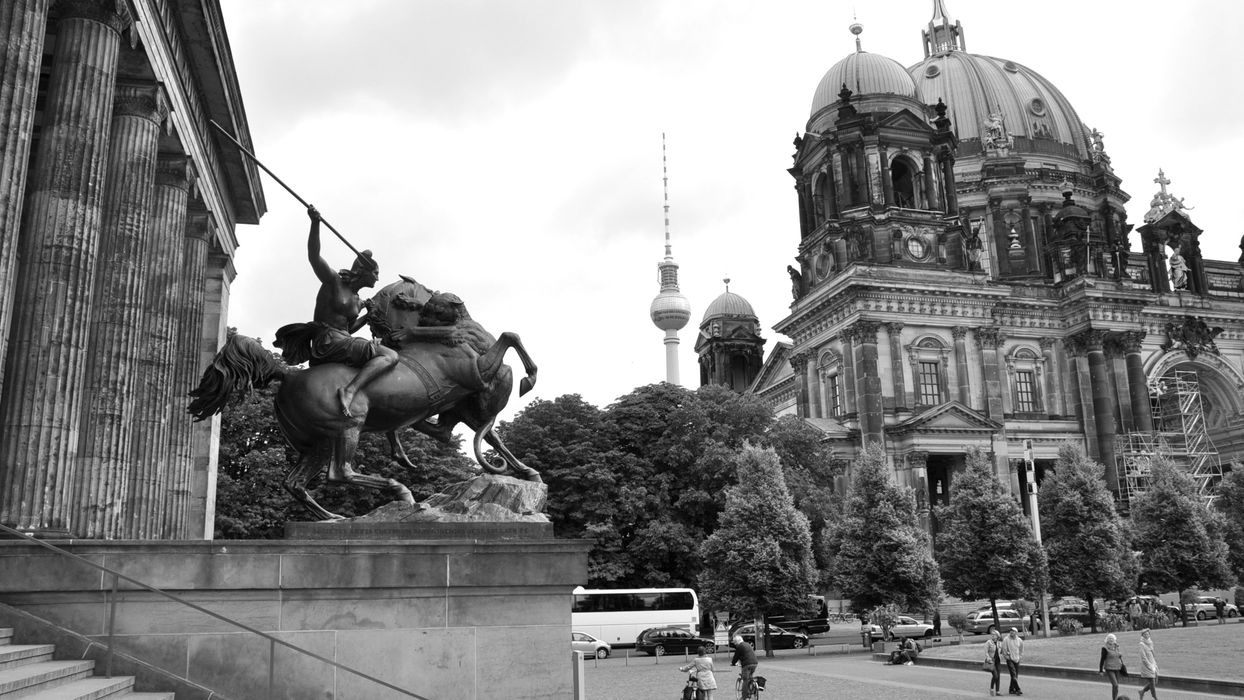TOURS
British historian Eric Hobsbawm maintained that the past century did not begin in the year 1900, but rather in 1914, with the beginning of World War One, and that it ended prematurely in 1989 with the fall of the Berlin Wall.
This peculiarly short twentieth century is also the century of Berlin. No other city was marked in the same way by the events of those decades. The catastrophic end of World War One and the Prussian Empire, the Weimar Republic, the Third Reich, the Holocaust, and the Cold War: all these events left wounds and scars still visible on the city map, its buildings, and public spaces. The ongoing attempt to cope with this complicated legacy has turned the city into an open-air lab that challenges how we think about Europe, society, and the future. These are the faces of Berlin:
The tours we offer
Our tours start at a minimum cost of 180 euros for a duration of 3-4 hours.
If you have any special requirements (specific interests, presence of people with disabilities, tours for children, etc.) please contact us and we will be happy to create tailor-made tours for you.
In order to understand Berlin, one has to understand the fate of the Prussian state, which heavily shaped European history in the 18th and 19th centuries. Prussian culture is the true spiritual core of Berlin. In our walk along the boulevard Unter den Linden, from Alexander Platz to the Brandenburg Gate, we walk through the most important buildings of this historical phase, dealing with the themes of the German Enlightenment (Aufklärung), the age of Frederick the Great and Otto von Bismarck’s imperial dream, which faded with the onset of the First World War. This walk is dominated by the work of Karl Friedrich Schinkel, a German architect and city planner whose vision characterizes Museum Island with its mixture of classic and neo-gothic elements defining the core of German Romanticism. A visit to the Humboldt Forum, which was inaugurated in December 2020 on the site of the old Berlin Castle, will prompt a reflection on Germany in the post-colonial age.
DURATION
3-4 h
PRICING
starting from €180
MEETING POINT
Alexanderplatz
Prussian Berlin
An exhaustive introduction to historical Berlin
Propaganda footage of the 1930s shows Nazi Germany as a rich and prosperous country characterized by a lively social and political life. Now we can see through those lies and understand not only the destructive power of that dictatorship but also its tragic legacy. This tour will take you through the landmarks of this dark period, from National Socialism’s early days to Hitler’s rise to power and his fall. We will start with the German Parliament and continue with the geography of Nazi power in town, including a stop by the deliberately unremarkable plate on the site where Hitler’s bunker was. We will finish with a guided tour of the Topography of Terror, an illuminating documentation center built on the grounds of the destroyed Gestapo headquarters.
DURATION
3-4 h
PRICING
starting from €180
MEETING POINT
Hauptbahnhof
Third Reich Berlin
Berlin in its darkest hour: the rise and fall of the Nazi dictatorship
The Berlin Wall did not simply divide the city in two, it was also the marker of a larger wall that severed Europe, and most of the world, into two distinct blocks: the world of Western capitalism and the one of Eastern socialism. It is ironic that a large part of that history has been erased exactly in Berlin, where it was most tangible. Of the 170 kilometers constituting the original wall, less than 2km are still standing: we will visit what is left, interpret the traces and fill in the gaps together. We will visit Potsdamer Platz, Checkpoint Charlie, and the famous East Side Gallery with its colorful murals. We will have a taste of the Karl Marx Allee, an open-air museum of socialist architecture, and end with the Berlin Wall Memorial at Bernauerstrasse, where a substantial section of the so-called “death strip” has been preserved in its original conditions.
DURATION
3-4 h
PRICING
starting from €180
MEETING POINT
Checkpoint Charlie
Divided Berlin
On the traces of the Berlin Wall
When the 20th century is referred to as “the Age of Extremes” it is impossible not to think of Berlin as one of its protagonists. The intense historical period between the outbreak of World War One in 1914 and the fall of the Berlin Wall in 1989 had Berlin as its stage and Theberlinest will guide you through its most significant moments: the catastrophic end of World War One, the Weimar Republic, Berlin in the roaring 20s, National Socialism, and Cold War Berlin. Bringing to life history, trauma, progress and resilience, the extraordinary cultural topography of the city will take you on a time ride you will never forget.
DURATION
3-4 h
PRICING
starting from €180
MEETING POINT
Alexanderplatz
Berlinexpress
Travel in time between WWI and the fall of the Berlin Wall
Berlin has been recently designated “the graffiti Mecca of the urban art world.” Not bad for a place where street art began as a minor movement in the late 1970s, confined to the rough patches of the Western sector. Today, graffiti and numerous forms of urban art – guerilla knitting and urban gardening just to name a few - continue to reclaim the city as a public space of unbridled creativity. Our tour will take you through the landmarks of this burgeoning street scene brimming with the works of international celebrities (Shepard Fairey, Blu, Victor Ash) and artists who have made Berlin their home. The tour will start with the large format works characterizing Kreuzberg 36 and move along an uninterrupted free gallery toward the River Spree under the tracks of the U1 metro line. A new perspective opens up at the Oberbaumbrücke, where the frenetic pictures on rooftops and buildings give way to the nearly institutionalized space of the East Side Gallery. After becoming familiar with the nuts and bolts of graffiti jargon, we will be ready to tackle Mitte and end our tour at Haus Schwarzenberg for a colorful grand finale.
DURATION
3-4 h
PRICING
starting from €180
MEETING POINT
Wittenbergplatz
Urban Art and Street Culture
A walk through an ever-changing open-air gallery
Up to World War Two, the Jewish community in Berlin was a crucible of intellectuals, scientists and businessmen that had fostered the city life for centuries. Acknowledging this lost world is crucial to understanding Berlin today and demands an exploration of German-Jewish relationships before the rise of National Socialism. In this tour we will cover Jewish life in Berlin from its inception to its ultimate destruction while walking through the streets of Scheunenviertel: the city's historic Jewish neighborhood. We will show you the New Synagogue, whose restored dome is the symbol of reformed Judaism, we will see what remains of Tacheles (from the Hebrew “speak openly”), and stop by the former Jewish school and orphanage in Auguststraße – a street where you can also find a kosher meal or snack. We will wander through the beautifully renovated Hackesche Höfe which hosts, among the trendy stores and artsy galleries, both the Anna Frank Center and the Otto Weidt Museum. Otto Weidt was a Berlin manufacturer who saved numerous Jews from deportation by employing them in his brush business: our tour will include a visit to the museum located on the premises of the former brush factory.
DURATION
3-4 h
PRICING
starting from €180
MEETING POINT
Hackescher Markt
Jewish Berlin
Jewish life in Berlin: Scheunenviertel
Berlin’s recent architecture is no doubt a feast for the eye. To help you enjoy its finest parts we will walk you through spectacular highlights and hidden gems while telling you about the competing impulses that shaped the last 60 years of this ever-changing cityscape. You will appreciate the unexpected grace of socialist urban planning in East Berlin, see the striking glass structure of the Central Station, and be stunned at the jagged surfaces of the Jewish Museum. We will admire the great masters of modernism in the bold lines of the Berlin Philharmonie and in the iconic severity of the New National Gallery. A walk through Potsdamer Platz with its large commercial development and decorative sculptures will provide an overview of the big names of the 1990s and offer you a distinctive perspective on Germany’s reunification. As a final treat, we will peek into the city of the future at the Humboldt Forum. In this tour, we will see work by Peter Eisenman, Daniel Libeskind, Charlotte Frank, Frank Gehry, Norman Foster, Renzo Piano, and Mies van der Rohe.
DURATION
3-4 h
PRICING
starting from €180
MEETING POINT
Potsdamer Platz
Architecture in Berlin
Berlin’s architecture from modernism to present-day archistar
About one hour North of Berlin, near the town of Oranienburg, lies the former concentration camp of Sachsenhausen. Here the mechanics of extermination implemented during the Holocaust become visible. At the site, you can visit the barracks and observe the camp structure as well as take advantage of the numerous exhibitions that the internal museum hosts. The clear traces available for scrutiny and the emotional impact they produce will make this experience an unforgettable moment and an opportunity to reflect on the meaning of social and political responsibility. Rather than focusing on immobilizing horror, the visit to Sachsenhausen will strengthen the visitors’ impulse to actively preserve a tolerant and equitable society.
DURATION
5-6 ore
PRICING
a partire da 240 €
MEETING POINT
Hauptbahnhof
Sachsenhausen Concentration Camp Memorial
Bearing Witness: the Nazi extermination machine
Photo credits:
Marco Pavan
Tommaso Speccher
[Long description] -----Per capire la Berlino di oggi ci si deve confrontare con le sorti dello Stato prussiano, che ha caratterizzato pesantemente la storia europea del XVIII e XIX secolo: la cultura prussiana rappresenta il vero nocciolo spirituale di Berlino.
Nella nostra passeggiata lungo il viale Unter den Linden, da Alexander Platz fino alla Porta di Brandeburgo, camminiamo attraverso gli edifici più importanti di quella fase storica affrontando i temi dell’Illuminismo tedesco (Aufklärung), dell’età di Federico il Grande e del grande sogno imperiale prussiano di Otto von Bismarck, sfumato con gli inizi della Prima guerra mondiale.
Questa passeggiata permette di confrontarsi con lo stile architettonico tipico del classicismo tedesco e della età guglielmina: l’architettura di Schinkel, che caratterizza l’Isola dei Musei segna indelebilmente quel momento storico, incrocio di classicità e neo-gotico, elementi essenziali della cultura del romanticismo tedesco. La visita dell’Humboldt Forum, appena inaugurato sull’area del vecchio castello di Berlino, ci permetterà di riflettere invece sul tema odierno del peso politico della cultura prussiana e coloniale nella tradizione tedesca. Obiettivo di questa passeggiata è quello di permettere ai nostri ospiti di confrontarsi con i grandi temi della cultura classica, romantica e contemporanea tedesca.
DURATION
[durata]
PRICING
[costo]
MEETING POINT
[punto d'incontro]
[Title]
Tours [highlight]
[Long description] -----Per capire la Berlino di oggi ci si deve confrontare con le sorti dello Stato prussiano, che ha caratterizzato pesantemente la storia europea del XVIII e XIX secolo: la cultura prussiana rappresenta il vero nocciolo spirituale di Berlino.
Nella nostra passeggiata lungo il viale Unter den Linden, da Alexander Platz fino alla Porta di Brandeburgo, camminiamo attraverso gli edifici più importanti di quella fase storica affrontando i temi dell’Illuminismo tedesco (Aufklärung), dell’età di Federico il Grande e del grande sogno imperiale prussiano di Otto von Bismarck, sfumato con gli inizi della Prima guerra mondiale.
Questa passeggiata permette di confrontarsi con lo stile architettonico tipico del classicismo tedesco e della età guglielmina: l’architettura di Schinkel, che caratterizza l’Isola dei Musei segna indelebilmente quel momento storico, incrocio di classicità e neo-gotico, elementi essenziali della cultura del romanticismo tedesco. La visita dell’Humboldt Forum, appena inaugurato sull’area del vecchio castello di Berlino, ci permetterà di riflettere invece sul tema odierno del peso politico della cultura prussiana e coloniale nella tradizione tedesca. Obiettivo di questa passeggiata è quello di permettere ai nostri ospiti di confrontarsi con i grandi temi della cultura classica, romantica e contemporanea tedesca.






























































